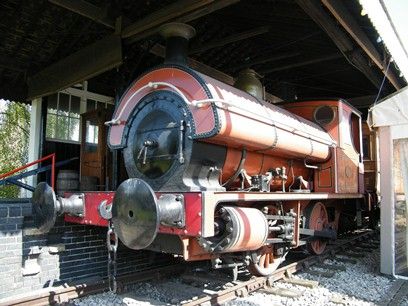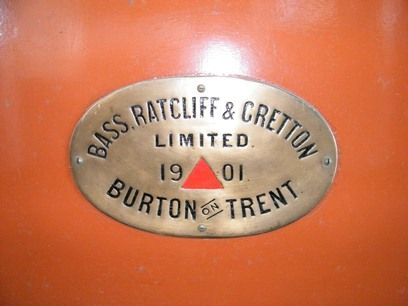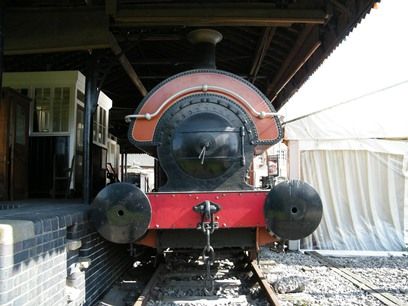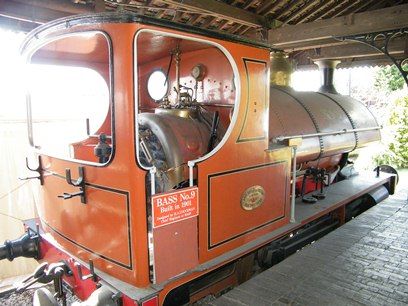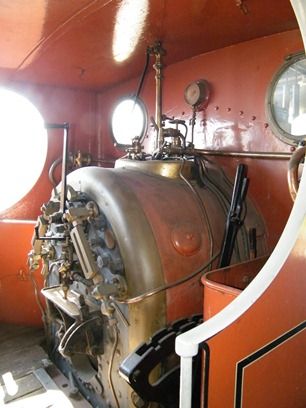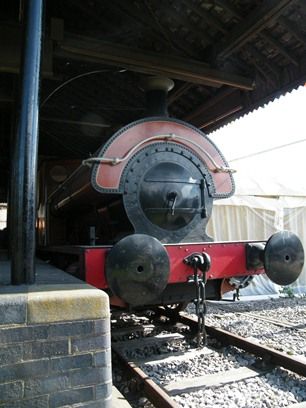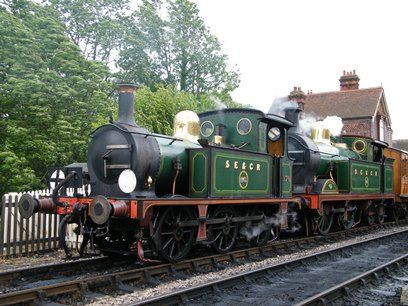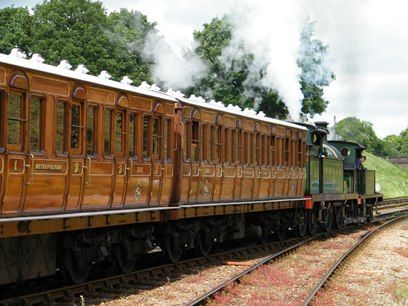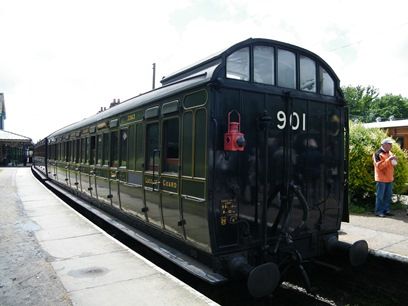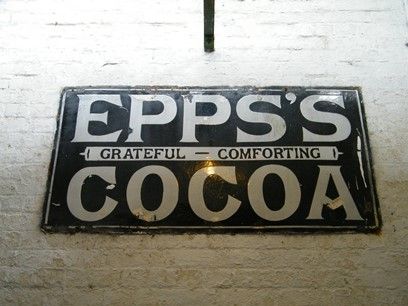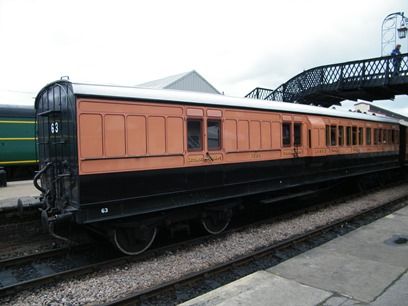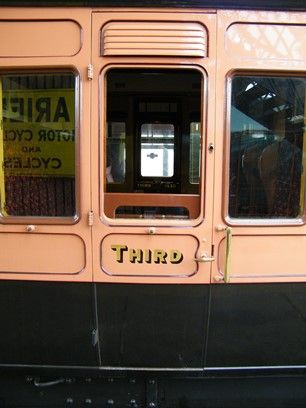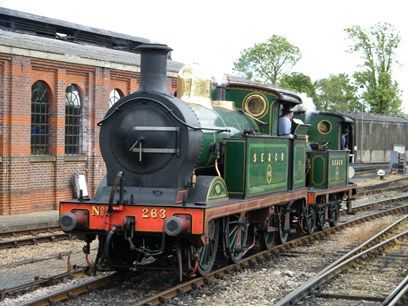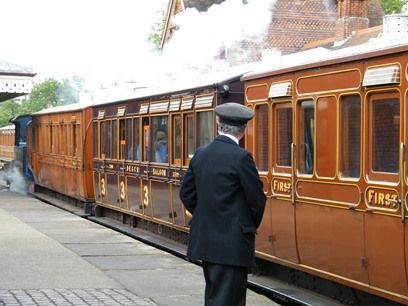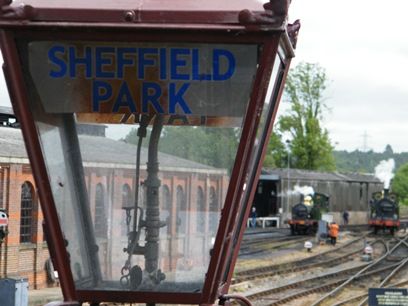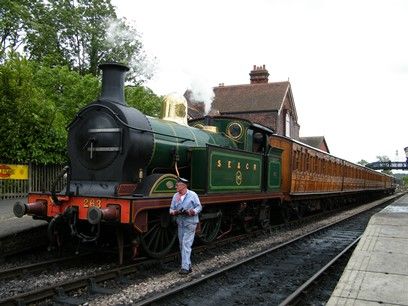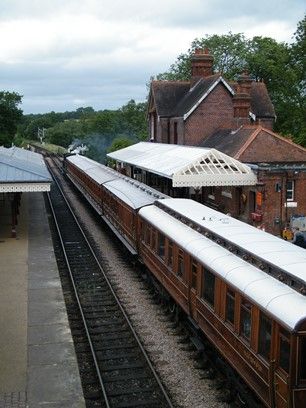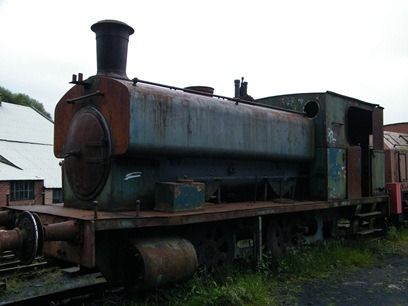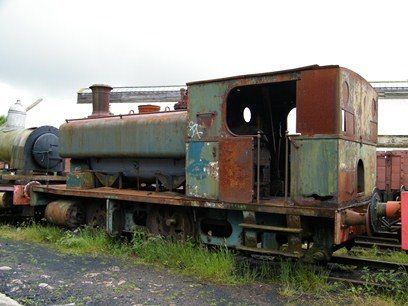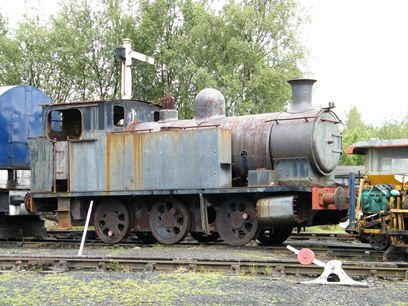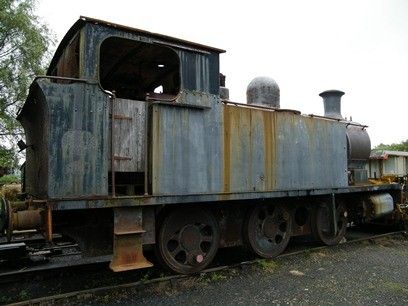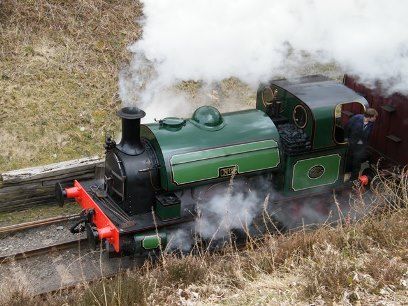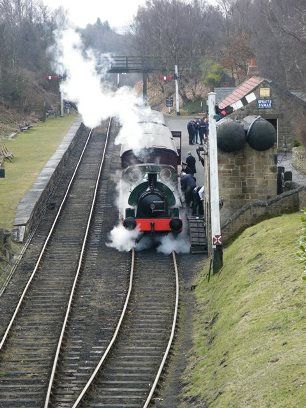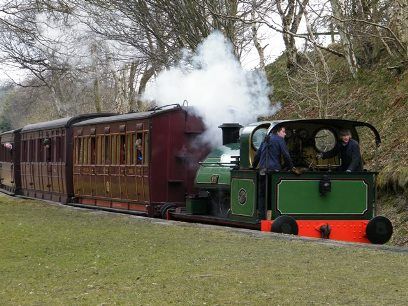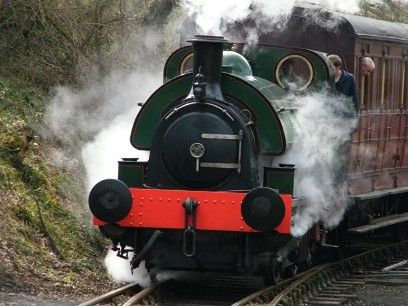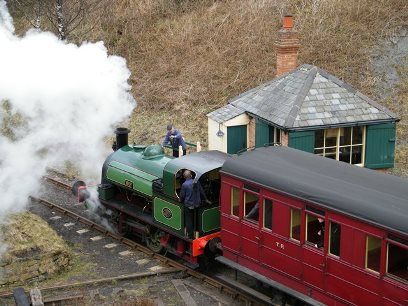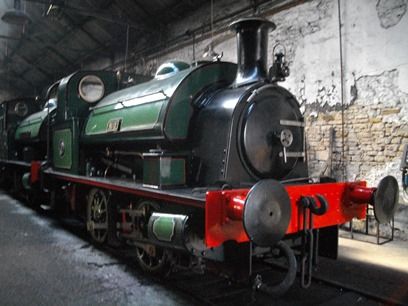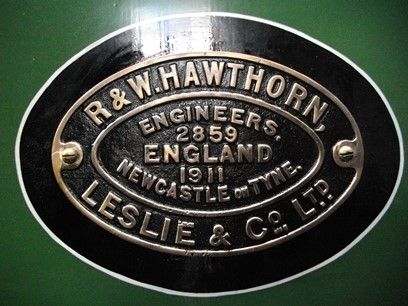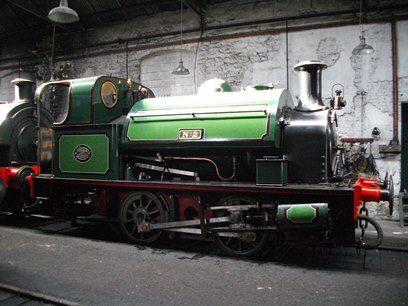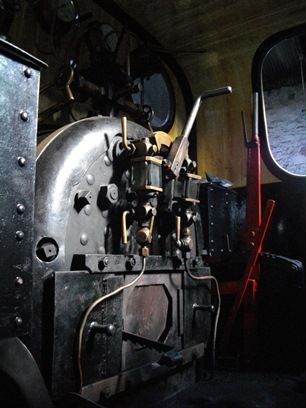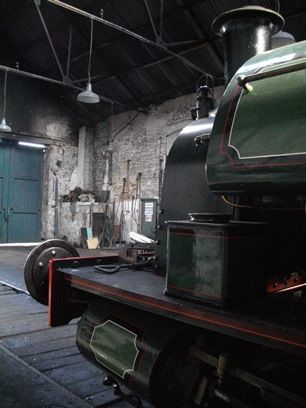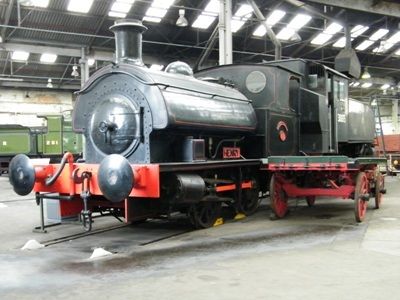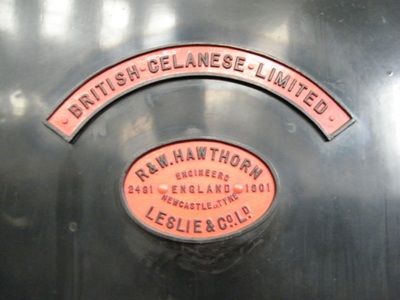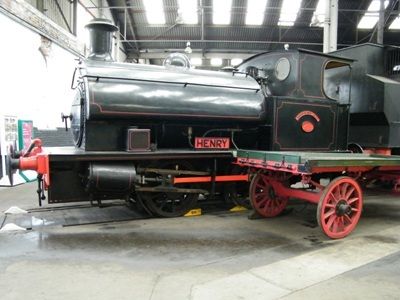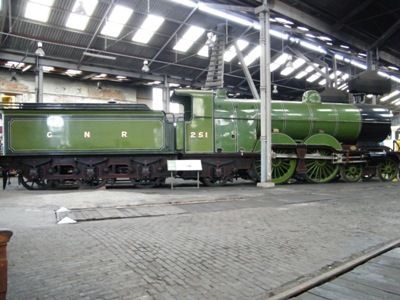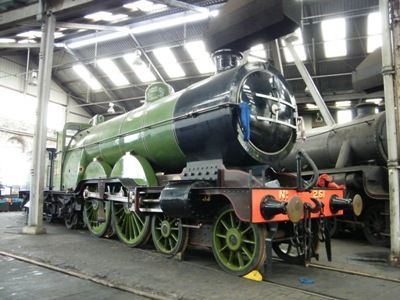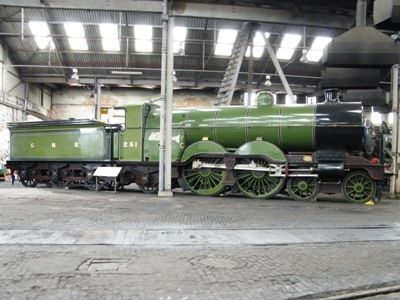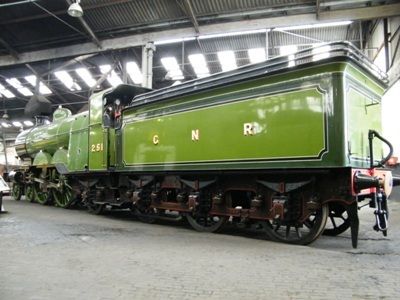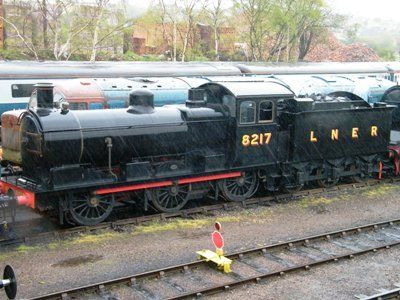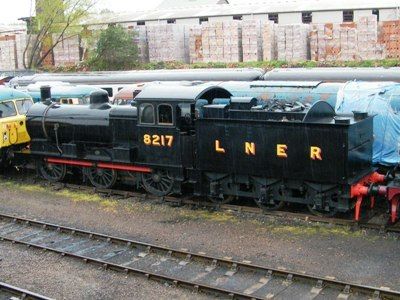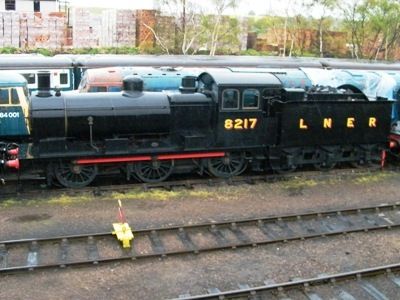This little locomotive, built by Neilson, Reid & Co in 1901 as works number 5907 was built for the Bass Brewery in Burton-upon-Trent, who operated a fairly sizeable railway around the town using its own fleet of locomotives and wagons, and even at least one carriage for inspections, dignitaries etc. It was Number 9 in the fleet, and today is the only surviving steam locomotive from the railway, and, along with one of the carriages and a petrol locomotive later used are on display at the National Brewery Centre in Burton-upon-Trent. The red triangle seen on the locomotive is the symbol of Bass
A blog about the Edwardian era in the UK - objects, buildings, people, literature, film and all other aspects of the Edwardian era (covering 1901-1919)

Showing posts with label Steam Locomotives. Show all posts
Showing posts with label Steam Locomotives. Show all posts
Wednesday, 26 June 2013
Neilson, Reid & Co 0-4-0ST Steam Locomotive No 9, 1901
Monday, 24 June 2013
Edwardian Weekend on the Bluebell Railway
South Eastern & Chatham Railway locomotives 178 of 1910 and 263 of 1905
The Bluebell Railway has featured on the blog before (here - http://electric-edwardians.blogspot.co.uk/2012/07/bluebell-railway-1905-h-class-steam.html) and is home to easily the best collection of working Victorian and Edwardian locomotives and rolling stock in the UK and likely the world. This past weekend on 22nd and 23rd June, the railway ran an Edwardian Weekend, showcasing the railway's locomotives and carriages that would have been seen on the railways in the Edwardian era, as well as having staff in period clothing and also an Edwardian Fair, with various amusements of the time including a Punch and Judy show. These photographs hopefully give a good impression of the event which I hope will be run in years to come, as is one of the few preserved railways that have not only a railway station set in the Victorian/Edwardian era but also the locomotives and rolling stock to go with it, and also accurate railway uniforms of the era.
Train comprising of the two SECR locomotives and 1898/1900 Metropolitan Railway carriages leaving Horsted Keynes station
The view from an 1898 Metropolitan Railway carriage over East Grinstead viaduct
South Eastern & Chatham Railway 'Birdcage' brake carriage 901 built in 1910
South Eastern & Chatham Railway P Class locomotive 178 of 1910
One of many interesting Edwardian related projects at the Bluebell Railway is the reconstruction of a 1911 London, Brighton & South Coast Railway express passenger locomotive, 'Beachy Head'
London & South Western Railway Lavatory Brake 3rd carriage 1520 of 1910, seen here in the livery it would have worn when first built - it has a very large luggage compartment for the amount of luggage holidaying Edwardians took with them to the south coast of England
South Eastern & Chatham Railway H Class locomotive 263 of 1905
A train consisting of four wheeled 19th century carriages (plus LSWR 1520 of 1910 out of shot), hauled by South Eastern & Chatham Railway P Class locomotive 323, leaving Sheffield Park station with staff in period London, Brighton & South Coast Railway uniform
Close up of station lamp at Sheffield Park, with the engine shed and two Edwardian SECR locomotives in the background
Sheffield Park station
Another photo of the charming little P Class locomotive 178 of 1910 - three of these locomotives reside at the Bluebell Railway, and four in total are preserved - not bad when you consider the P Class only totaled eight locomotives in all!
Sunday, 26 May 2013
Andrew Barclay 0-4-2ST Steam Locomotive No 6, 1910
This saddle tank built by Andrew Barclay of Kilmarnock in 1910 as works number 1193 has the saddle tank characteristic of most Barclay locomotives, but unusually for an industrial locomotive, has the 0-4-2 wheel arrangement, with the four driven wheels followed by a trailing, un-powered axle and wheels. The additional wheels would accommodate a longer boiler, making it more powerful. The trailing axle is now missing and some other parts, and is preserved at the Tanfield Railway in County Durham
Friday, 26 April 2013
Andrew Barclay 0-6-0T Steam Locomotive No 17, 1913
This side tank steam locomotive was built by the well known firm of Andrew Barclay of Kilmarnock, who usually built locomotives with a characteristic saddle tank design (which will feature in later posts) in 1913 as works number 1338, for the Dalmellington Iron Company of Ayrshire, Scotland. It is seen here at Marley Hill on the Tanfield Railway in the summer of 2012, but has since been removed from the railway for restoration, to I believe working condition
Monday, 22 April 2013
Hawthorn & Leslie 0-4-0ST Steam Locomotive No 2, 1911 - Part 4
The overhaul of this locomotive has featured several times already on this blog, and these photos taken in early April show Hawthorn Leslie No 2 back in service on the Tanfield Railway. See the previous posts regarding Hawthorn Leslie No 2 of 1911 here;
Thursday, 4 April 2013
Hawthorn & Leslie 0-4-0ST Steam Locomotive No 2, 1911 - Part 3
This typical Edwardian industrial railway Saddle Tank Locomotive, covered previously on the blog here;
And here;
Is now complete and has returned to steam at the Tanfield Railway, a fantastic preserved railway in the north east of England. I believe the testing has gone well, and should be in regular passenger service before too long. I highly recommend a visit;
Wednesday, 7 November 2012
Hawthorn & Leslie Saddle Tank Locomotive 'Henry', 1901
Built in 1901 by the Tyneside industrial locomotive maker of Hawthorn & Leslie, this small steam saddle tank locomotive (saddle tank meaning the distinctive type of water tank fitted - sat over the boiler, like a saddle) is an 0-4-0ST, with four coupled driving wheels. It was built for Webster's Brick and Lime Works in Coventry, and was originally named 'Rosabel' after the daughter of the Managing Director, Henry Webster, of the London & North Western Railway, as the locomotive hauled wagons laden with bricks over the LNWR's line between Coventry and Nuneaton. During WW1 it hauled large naval guns being built at the Coventry Ordnance Works, and eventually in 1928 was renamed 'Henry' by it's new owners at British Celanese at Spondon near Derby, named after Dr Henri Dreyfus, the Swiss chemist who was the chairman of British Celanese.
It is seen here in April 2012 at the Barrow Hill Engine Shed near Chesterfield, Derbyshire, and is a superb typical example of an Edwardian industrial locomotive employed by private owners at large industrial sites such as brick works as in Rosabel/Henry's case, factories, breweries, coal mines etc etc
Monday, 15 October 2012
Great Northern Railway C1 Atlantic Locomotive, 1902
The Atlantic design was further improved by Ivatt in December 1902 by enlargening the boiler from a 4 ft 8 in diameter to 5 ft 6 in. These photographs show the first 'large' GNR Atlantic, 251, the first of 94 of this class of large boilered C1 Atlantics. Initially there were some teething troubles, but after these were solved they served succesfully hauling the heaviest passenger express trains on the Great Northern Railway, although they were mostly replaced by larger locomotives in the 1920's. They continued to serve on lighter express trains, with 17 of them entering British Railways service in 1948. 251 was earmarked for preservation, and was retired in 1950. It was restored into it's original Great Northern Railway livery, and is seen here at Barrow Hill Engine Shed near Chesterfield, Derbyshire in April 2012
Sunday, 7 October 2012
Great Eastern Railway G58 Goods Locomotive, 1905
The G58 class of Goods locomotives were designed by James Holden for the Great Eastern Railway and introduced in 1905. The wheel arrangement is 0-6-0, meaning the only wheels for the locomotive are the six powered wheels coupled together, with a tender for water and coal behind. The 0-6-0 wheel arrangement was very popular for steam locomotives through most of the history of steam locomotives on British railways. They were similar to the earlier 1900 designed F48 class but had a superior Belpaire firebox, shown by the more square topped part of the boiler closest to the cab, and following the success of the G58 design, the 60 earlier built F48 class were rebuilt to G58 standard. As well as the 60 rebuilds, 30 newly built G58's were built, including this sole survivor, 1217, built in the first batch of G58's in 1905, which worked up until 1962 and then was preserved as part of the National Collection. It is preserved in the 1923 onwards livery of the London & North Eastern Railway with it's newer number of 8217. It is seen here on a very wet sunday at the Barrow Hill Engine Shed near Chesterfield, Derbyshire in April 2012
Subscribe to:
Posts (Atom)
